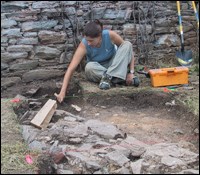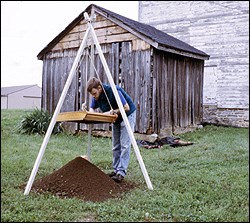
Why Archeology? Monocacy National Battlefield commemorates the historic events of the Civil War and the battle that was fought at Monocacy Junction on July 9, 1864. The landscape has many other stories to tell, however -- a rich and diverse history that spans over 10,000 years. That history cannot be easily seen above ground; indeed, many of the clues to the landscape of the past are buried underground. That's where archeologists come in. Since 2001, archeologists from the National Park Service and the University of Maryland have teamed to investigate the interesting and varied cultural landscape that comprises Monocacy National Battlefield. Archeology at Monocacy Archeological research at Monocacy helps park personnel identify the kinds of archeological resources that are present at the park to aid in their appropriate management, protection, and interpretation. Archeology can also help us understand and experience aspects of history that appear only incidentally in the historic record, if at all. Monocacy National Battlefield is responsible for preserving the many historic buildings and landscape that make up the park. When buildings are stabilized or restored, or when walking trails and parking lots are established, archeological research is sometimes necessary to ensure that such activities do not adversely impact archeological resources. For example, when the new Monocacy National Battlefield visitor center was in the planning stages, archeology was an integral part of the process. Learn more about how we do it. 
Archeological Projects
|
Last updated: April 23, 2021
